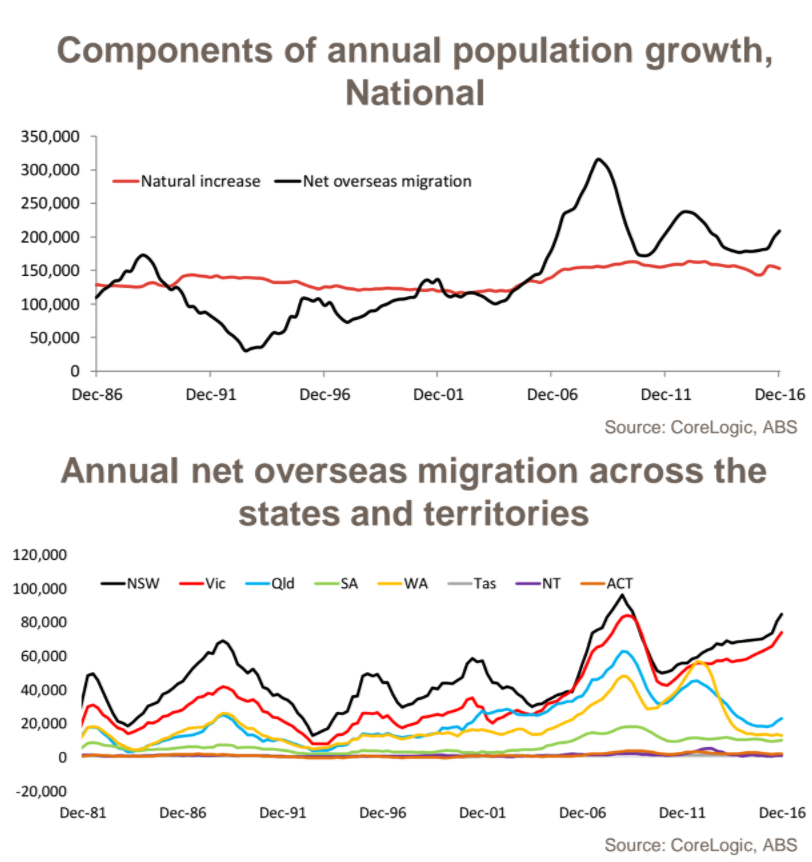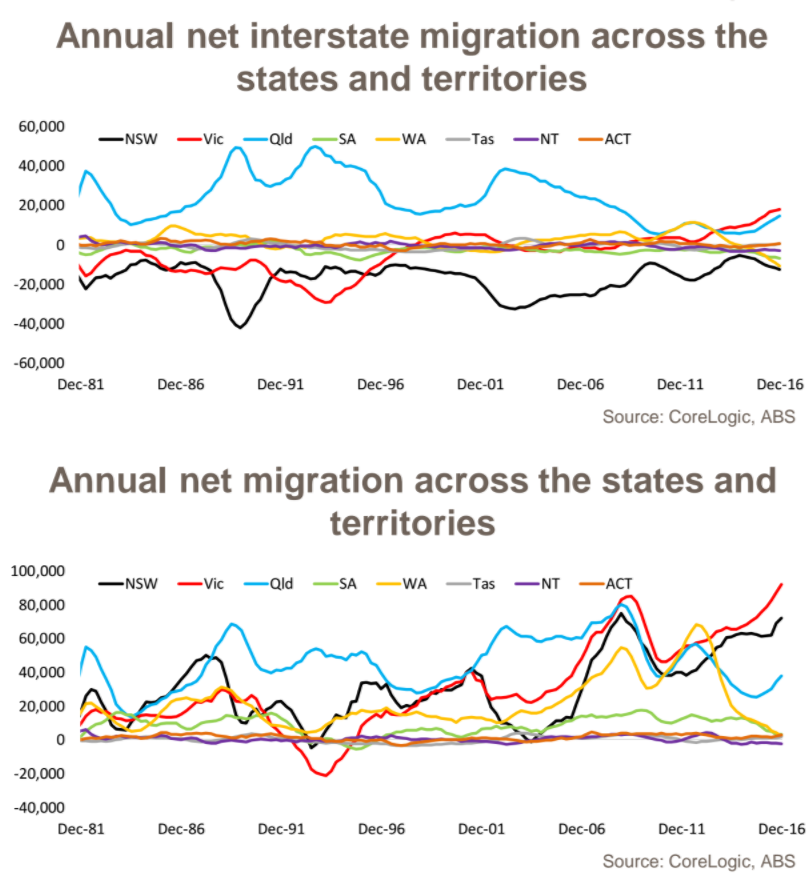Latest Population Growth Data Confirms NSW & VIC Most Popular States

Recent demographic data showed a rapid rate of population growth driven by migration.
To the December 2016 quarter, Australian Bureau of Statistics (ABS) demographic data showed that at the end of 2016 the national population was estimated to be 24.4 million persons which had increased by 1.6% over the year and the largest annual increase in the national population since the 12 months to June 2014.
In raw numbers, 372,805 more residents called Australia home over the year and represented the largest increase in the population since March 2014 Net overseas migration and interstate migration remained the key drivers for national population growth over the year and was recorded at 208,953 persons which accounted for 56% of the national increase in the population.
Monthly overseas and arrivals data shows that over the 2016 calendar year, the largest sources of permanent arrivals to Australia were:
India (22,180 persons)
China (18,050 persons)
New Zealand (11,740 persons)

CoreLogic Research Analyst Cameron Kosher said, while interstate migration nets to zero at a national level, it plays an important component for population growth across the individual states and territories.
"In particular, interstate migration and overseas immigration have been the key drivers of housing demand.”
“Whereas natural increase removes older people and adds younger people, interstate migration and overseas immigration brings a new person or family to a region of the country and these people need to be housed,” he said.
NSW and Victoria are the popular states for a bulk of overseas immigrants.
“This isn’t really a surprise when you consider that those two economies are the strongest nationally," Mr Kusher said.
NSW (40.6%) and Vic (35.4%) combined accounted for 76.0% of net overseas migration nationally in 2016 while if you add Queensland (11.0%), only 12.9% of net overseas migration flowed to areas outside of the three most populous states.
Four states and territories (VIC, QLD, TAS and ACT) recorded positive net interstate migration through 2016 with the remaining four states and territories seeing a net loss from interstate migration. Interstate migration into Vic is at an historic high level and inQueensland there has been a substantial rebound recently however, it remains dramatically lower than its historic high.

The net outflow of residents was recently at historic low levels however, over the past couple of years the direction has reversed and the outflow of residents from NSW has again gathered pace. In WA, the net outflow of residents away from the state to other areas of the country is currently at an historic high.
“By combining net interstate migration and net overseas migration we can get a picture on total net migration across the states and territories," Mr Kusher said.
Over the 2016 calendar year, the Northern Territory was the only state or territory to record a net loss from migration (-2,340 persons).
Victoria is the nation’s largest benefactor from migration with 44.0% of total net migration over the past year into that state, followed by NSW (34.5%) and Queensland (18.0%). The remaining five states and territories accounted for a combined 3.5% of net migration nationally over the year which was an historic low.
“Migration trends show a clear preference for overseas migrants to settle in either NSW or Vic while interstate migrants appear to be turning their backs on NSW and WA and choosing to move to Victoria and Queensland," Mr Kusher said.
“NSW is likely to be less attractive for interstate migrants due to the high housing costs while the ongoing weak housing end economic conditions are the main deterrents in WA.
“Victoria is particularly attractive to migrants because wages are similar to those in NSW but housing is much cheaper while the economy is performing similarly strong.
Queensland appears to be growing in popularity again largely due to the fact that housing is much cheaper than NSW and Vic and lifestyle housing markets in South-East Queensland seem to be seeing resurgent popularity,” he said.















